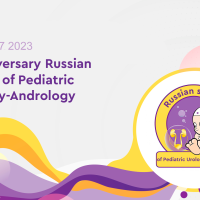
Experience of laparoscopic technique application in upper urinary tract pathology in children
Article authors


FSAI «National Medical Research Center for Children's Health» of the Russian Federation Ministry of Health
Introduction
today minimally invasive surgery is a new stage of pediatric urology development in 21-st century. Laparoscopic surgery is particularly relevant to urinary system in children.
Objective
To analyze results and complications of laparoscopic procedures, performed in urogenital system in children.
Material and methods
In the study were included 180 children, who underwent laparoscopic upper urinary tract surgery. According to diagnosis all children were distributed as follows: hydronephrosis – 61 pts; nonfunctioning kidney – 48 pts; nonfunctioning segment of duplex kidney – 37 pts; solitary kidney cyst – 26 pts; previously performed ureterocutaneostomy – 8 pts. All children, included in the study, were aged 2 months and 17 years.
Results
laparoscopic renal cyst resection was performed in 26 (14%) children. Cyst relapse occurred in 1 (3.8%) child. There were no intraoperative complications during kidney cyst resection. Laparoscopic nephrectomy was performed in 48 (26%) patients. LigaSure device using allowed reducing surgical intervention time. There was no clinically significant blood loss. Laparoscopic heminephrectomy was performed in 37 (20%) children, upper pole resection was performed in 32 (86%) children and lower – in 5 (14%). It was noted 2 (5.4%) postoperative complications: in 1 (2.7%) case a urinary leakage occurred, this complication was eliminated by stenting of a functioning segment, in the other case ther was a damage of ureter requiring a separate surgical intervention. Laparoscopic uretero-ureteroanastomosis was performed in 8 (4.4%) children with ureterocutoneostomies; there were no intra- and postoperative complications. Laparoscopic pyeloplasty was performed in 61 (34%) children aged from 3 months to 17 years. In 9 (14.7%) children surgery was performed for recurrent hydronephrosis. In 6 (9.8%) of them pyeloplasty was previously done with lumbotomic access. In 5 (8.1%) cases the cause of hydronephrosis relapse was the aberrant vessel. Among 52 (85%) children, who underwent primary laparoscopic pyeloplasty, an aberrant vessel was the cause of hydronephrosis in 16 (30.8%). Aberrant vessel transposition was performed in 2 (3.2%) children, in other cases was done a Hynes-Andersen pyeloplasty. In 19 (31%) patients kidney collecting system was drained with an internal stent, in 2 (3.2%) children postoperative complicatinons were a stent dysfunction and urinary leakage, which required a secondary endoscopic stenting. In the period between hospital admissions an asymptomatic leukocyturia was observed in 8 (13%) patients, in 1 (1.6%) of them there was a case of acute pyelonephritis, requiring antibacterial therapy. Stent removal was performed in 1-2 months. Intraoperative pyelostomy performed in 40 (65.5%) children. The overall time to pyelostomy removal after a laparoscopic pyeloplasty reduced from 12 to 5-6 days after surgery. According to our study results hydronephrosis recurred in 1 (1.6%) child, who futher underwent a repeated laparoscopic pyeloplasty.
Conclusions
The experience in laparoscopic technique applying for surgical intervention in upper urinary tract pathology has shown benefits of high efficiency gained from postoperative period reduction, absence of narcotic analgesics need, minimal number of intraoperative and postoperative complications.






